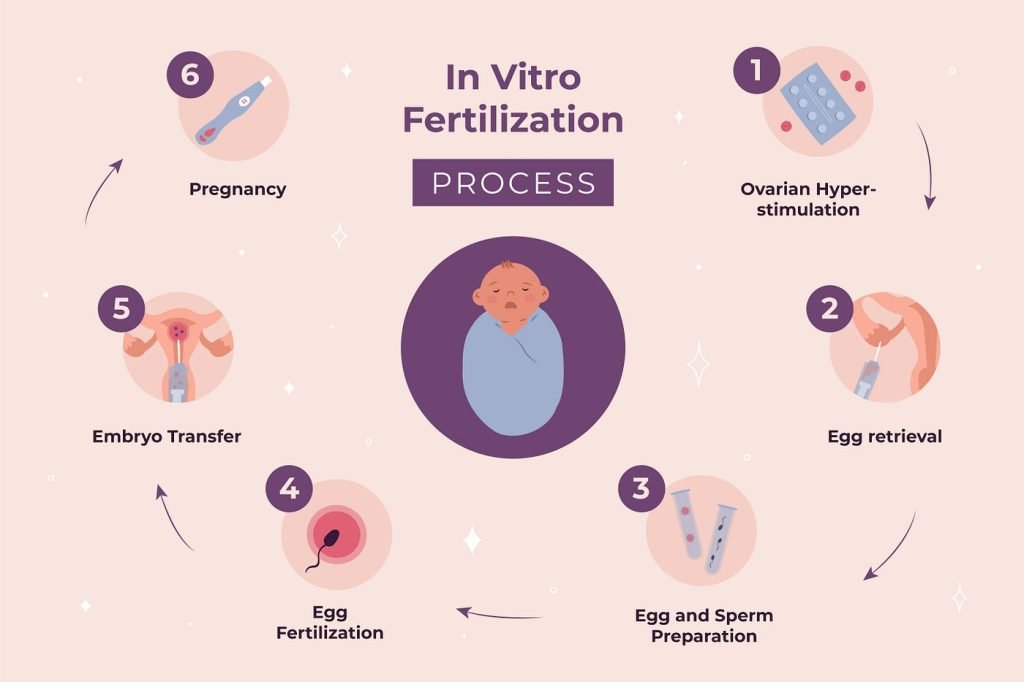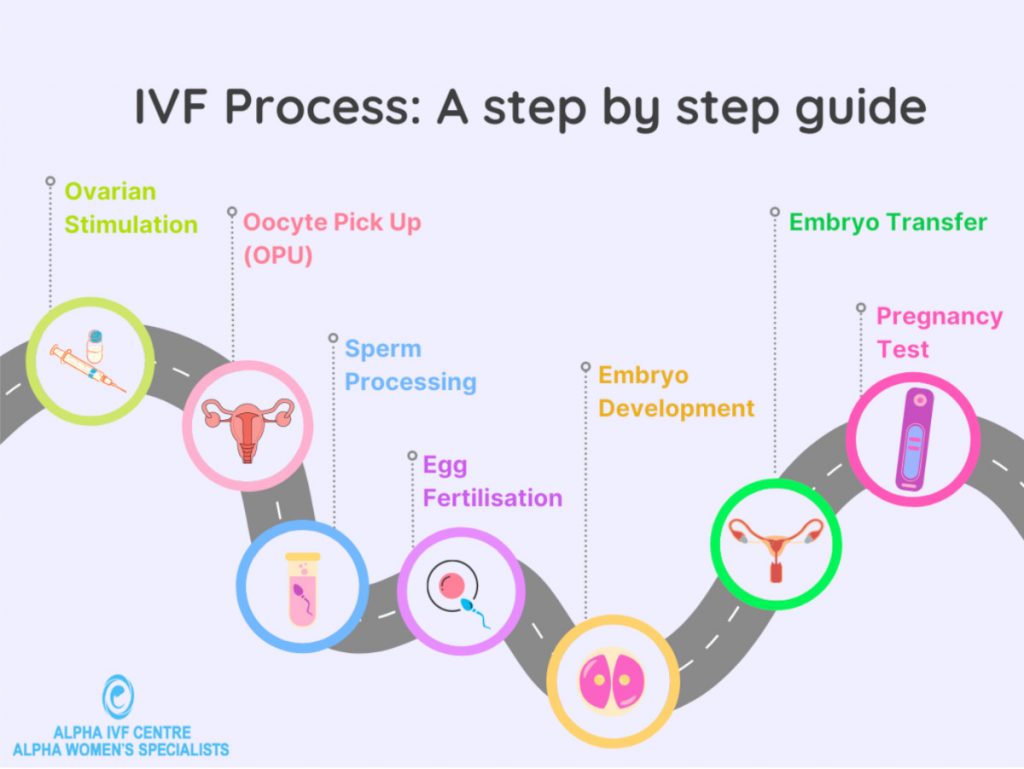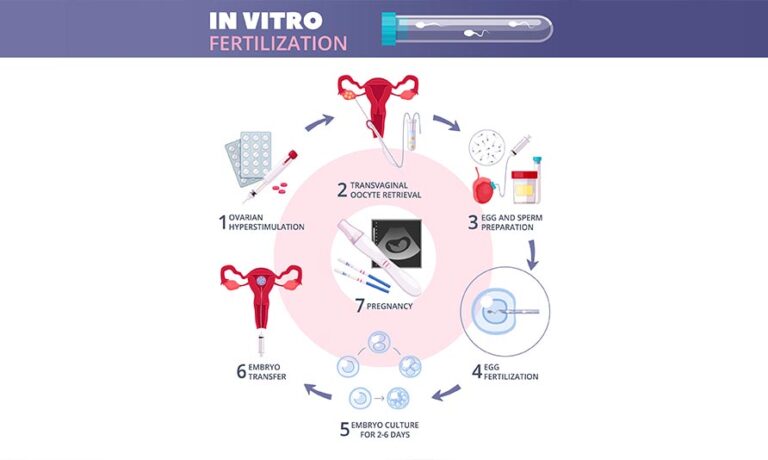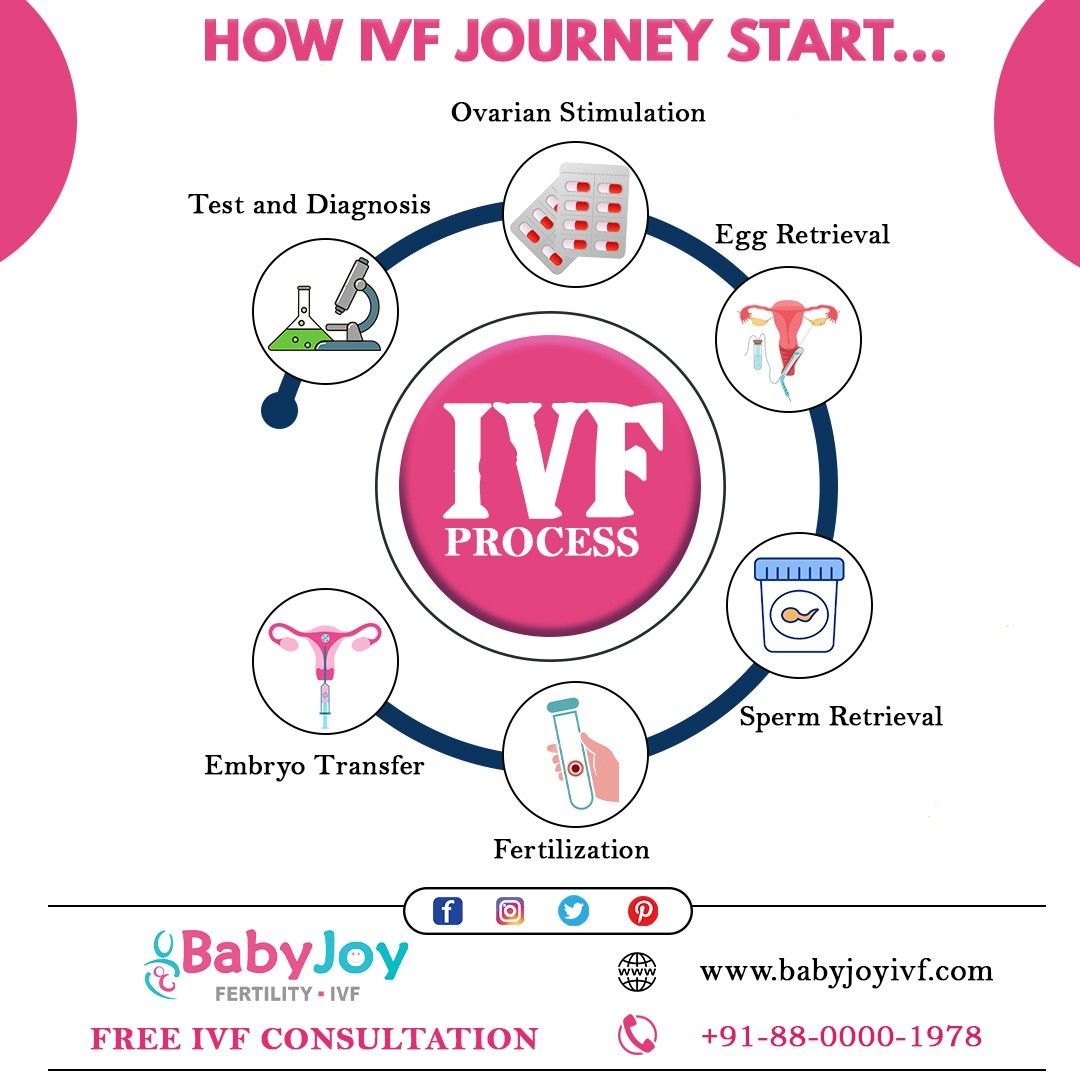How to Do IVF: Your Step-by-Step Guide to Starting a Family
In vitro fertilization, or IVF, is a life-changing journey for many people dreaming of parenthood. It’s a process that blends science, hope, and a little bit of patience to help create families when natural conception isn’t an option. Whether you’re just starting to explore fertility treatments or you’re ready to dive in, this guide will walk you through everything you need to know about how IVF works, what to expect, and how to make it as smooth as possible. Think of it as your friendly roadmap—detailed, practical, and packed with insights you won’t find everywhere else.
IVF isn’t just a medical procedure; it’s a deeply personal experience. From the first hormone shot to the moment you see that pregnancy test result, every step matters. So, let’s break it down together and cover all the bases—plus a few surprises along the way.
What Is IVF and Why Might You Need It?
IVF is a fertility treatment where eggs are retrieved from the ovaries, fertilized with sperm in a lab, and then placed back into the uterus to grow into a baby. It’s like giving nature a helping hand when things don’t work out on their own. The process has been around since the late 1970s, when the first “test-tube baby,” Louise Brown, was born, and it’s only gotten better since then.
People turn to IVF for all sorts of reasons. Maybe you’ve been trying to conceive for years without luck, or perhaps you’re facing specific challenges like blocked fallopian tubes, low sperm count, or endometriosis. It’s also a go-to option for same-sex couples, single parents by choice, or those using donor eggs or sperm. Whatever brings you here, IVF offers a path forward when other methods fall short.
Recent stats show that about 1 in 6 couples worldwide face infertility, according to the World Health Organization. That’s a lot of people looking for solutions—and IVF is one of the most successful ones out there, with over 8 million babies born through it globally. But it’s not a one-size-fits-all fix, so understanding how it works is the first step to figuring out if it’s right for you.
Step 1: Getting Ready for IVF—What to Do Before You Start
Before you jump into IVF, preparation is key. This isn’t just about showing up at the clinic; it’s about setting yourself up for the best possible outcome. Here’s how to get started.
Talk to a Fertility Specialist
Your journey begins with a visit to a reproductive endocrinologist—a doctor who specializes in fertility. They’ll run tests to figure out what’s going on, like bloodwork to check your hormone levels or an ultrasound to look at your ovaries. For your partner (if you have one), a semen analysis might be on the table too. These tests help your doctor create a plan tailored just for you.
Boost Your Health
Your body is about to do some heavy lifting, so give it a head start. Eating a balanced diet with plenty of fruits, veggies, and lean proteins can make a difference. Studies from the American Society for Reproductive Medicine suggest that a Mediterranean-style diet—think olive oil, fish, and nuts—might improve IVF success rates. Exercise is great too, but keep it moderate; think brisk walks or yoga, not marathons.
✔️ Do: Quit smoking and cut back on alcohol—both can lower your chances of success.
❌ Don’t: Overdo the caffeine. Stick to one cup of coffee a day.
Understand Your Finances
IVF isn’t cheap. In the U.S., one cycle can cost between $12,000 and $15,000, not counting medications. Some insurance plans cover it, but many don’t, so check yours. Look into clinics offering payment plans or grants from organizations like BabyQuest Foundation. Planning ahead can ease the stress later.
Emotional Prep: Build Your Support Team
IVF can feel like an emotional rollercoaster. Talk to your partner, friends, or a counselor about what’s ahead. Joining an online community—like a fertility forum or social media group—can also connect you with people who get it. You’re not alone in this.

Step 2: The IVF Process—Breaking It Down Day by Day
Once you’re ready, the real action begins. IVF happens in stages, and each one builds on the last. Here’s what it looks like, step by step.
Ovarian Stimulation: Growing Your Eggs
For about 10-14 days, you’ll take hormone injections to help your ovaries produce multiple eggs. Normally, you release one egg a month, but IVF needs more to increase your odds. You’ll visit the clinic often for ultrasounds and blood tests to track how those eggs are growing.
- What it feels like: The shots sting a little, but they’re quick. You might feel bloated or moody from the hormones—totally normal.
- Pro tip: Set a daily alarm so you don’t miss a dose, and keep your meds in the fridge if needed.
Egg Retrieval: The Big Day
When your eggs are ready, your doctor will schedule a minor procedure to collect them. You’ll be under light sedation, so you won’t feel much. A thin needle goes through your vaginal wall to your ovaries, guided by ultrasound, and sucks out the eggs. It takes about 20-30 minutes.
- Fun fact: You could have 10-20 eggs retrieved, but not all will be usable.
- Aftercare: Rest up for a day. Mild cramping is common, but call your doctor if it gets intense.
Fertilization: Lab Magic Happens
In the lab, your eggs meet the sperm—either your partner’s or a donor’s. There are two ways this can go:
- Traditional IVF: Sperm and eggs are mixed in a dish and left to fertilize naturally.
- ICSI (Intracytoplasmic Sperm Injection): A single sperm is injected into each egg, often used if sperm quality is low.
The fertilized eggs, now embryos, grow for 3-5 days. Scientists watch them closely to pick the healthiest ones.
Embryo Transfer: Back to You
A few days later, one or two embryos are placed into your uterus using a thin catheter. It’s quick, painless, and doesn’t need anesthesia. You might feel a little pressure, but that’s it. Any extra embryos can be frozen for later.
- What’s next: Rest for a bit, but you don’t need to stay in bed all day. Studies show light activity is fine.
The Two-Week Wait
Now, you wait 10-14 days to see if the embryo implants. This is the hardest part for many—hope and nerves all mixed together. A blood test at the clinic will confirm if you’re pregnant.
Step 3: What Happens After IVF—Pregnancy or Plan B
The outcome of IVF isn’t guaranteed, but here’s what to expect either way.
If You’re Pregnant
Congrats! Your doctor will monitor you closely for the first few weeks to make sure everything’s on track. You might keep taking hormones to support the pregnancy. About 33% of IVF cycles lead to a live birth for women under 35, per the CDC, though rates drop with age.
If It Doesn’t Work
It’s tough, but it’s not the end. About half of IVF cycles don’t result in pregnancy on the first try. Talk to your doctor about what went wrong—maybe the embryos didn’t implant, or your body needs a tweak in the plan. Many people succeed on their second or third round.
- Unique tip: Ask about “mock cycles” before your next try. These practice runs help fine-tune your hormone doses without using embryos.
The Emotional Side of IVF: How to Stay Strong
IVF isn’t just physical—it’s a mental marathon too. The ups and downs can hit hard, so here’s how to keep your head in the game.
Lean on Your People
Tell your close friends or family what you’re going through. They can’t fix it, but they can listen. One woman I heard about said her sister dropped off meals during her two-week wait—small gestures like that go a long way.
Try Mindfulness
Stress won’t ruin your IVF chances (science backs this up), but it can make the wait feel worse. Simple tricks like deep breathing or a 5-minute meditation app can calm your nerves. Research from Harvard shows mindfulness can lower anxiety by 30% in tough situations.
Celebrate Small Wins
Retrieved 15 eggs? Great! Embryos made it to day five? Awesome! Focusing on these milestones keeps you grounded.
Quick Quiz: How Do You Handle Stress?
- A) Talk it out with a friend
- B) Go for a walk
- C) Scroll social media endlessly
(Share your answer in your head—or with a friend—and see what works best for you!)
Boosting Your IVF Success: Tips You Haven’t Heard Everywhere
Everyone wants the best shot at success, right? Beyond the basics, here are some lesser-known ways to tip the scales.
Timing Matters More Than You Think
Did you know your body’s natural clock could play a role? A 2023 study from the journal Fertility and Sterility found that egg retrievals done in the morning had slightly higher fertilization rates than afternoon ones. It’s not a game-changer, but ask your clinic about their scheduling.
Acupuncture Might Help
Some swear by it, and there’s evidence to back it up. A 2022 meta-analysis in Reproductive BioMedicine Online showed acupuncture during IVF increased pregnancy rates by 10-15% in some cases. It’s thought to improve blood flow to the uterus. Worth a try if you’re open to it.
The Frozen Advantage
Fresh embryo transfers get a lot of hype, but frozen ones might be better for some. A 2024 study from the European Society of Human Reproduction found frozen transfers had a 5% higher success rate for women with high hormone levels post-stimulation. Talk to your doctor about which fits you.

IVF Myths vs. Facts: Clearing the Confusion
There’s a lot of noise out there about IVF. Let’s set the record straight.
| Myth | Fact |
|---|---|
| IVF always means twins | Nope! Single embryo transfers are common now, cutting multiple births to under 10%. |
| It’s only for older women | Not true—people in their 20s use IVF too, often for medical reasons. |
| Bed rest boosts success | Science says no. Moving around lightly after transfer is totally fine. |
Costs and Coverage: Making IVF Work for Your Wallet
IVF’s price tag can feel overwhelming, but there are ways to manage it.
Average Costs
- One cycle: $12,000-$15,000 (plus $3,000-$5,000 for meds)
- Frozen transfer: $3,000-$5,000
- Donor eggs: Adds $15,000-$20,000
Smart Money Moves
- Shop around: Clinic prices vary. One in New York might charge $14,000, while one in Texas is $11,000.
- Look for deals: Some offer “shared risk” programs—pay upfront, get a refund if it fails after a set number of tries.
- Tax breaks: In the U.S., medical expenses over 7.5% of your income might be deductible. Check with a tax pro.
Poll: What’s Your Biggest IVF Worry?
- A) The cost
- B) The process
- C) The emotions
(Think about it—what’s yours? It’s okay to feel all three!)

Real Stories: What IVF Feels Like From the Inside
Hearing from others can make this less daunting. Here are two quick tales.
Sarah, 32
“I was terrified of the shots, but my husband turned it into a game—‘Guess how many eggs today?’ It made us laugh through the nerves. We got pregnant on our second try, and now we’ve got a wild toddler.”
Mark, 40
“As the guy, I felt helpless watching my wife go through it. But being there for every appointment and learning the science together kept us connected. Our twins just turned one.”

The Science Keeps Evolving: What’s New in IVF?
IVF isn’t stuck in the past—it’s always improving. Here’s what’s fresh in 2025.
AI Picks the Best Embryos
Clinics are using artificial intelligence to analyze embryo quality. A 2024 trial in Nature Medicine showed AI picked winners 20% more accurately than human eyes alone. It’s not everywhere yet, but it’s coming.
Gentler Stimulation
“Mini IVF” uses lower hormone doses to get fewer, high-quality eggs. It’s cheaper and easier on your body. A 2023 study found it’s just as effective for some women under 35.
Sperm Boosters
For men with low counts, new supplements like CoQ10 are showing promise. A small 2024 study saw a 15% bump in sperm motility after three months. Ask your doc if it’s worth a shot.
Your IVF To-Do List: A Handy Checklist
Ready to roll? Here’s a quick rundown to keep you on track.
✔️ Meet with a fertility specialist and get tested
✔️ Clean up your diet and ditch bad habits
✔️ Check insurance and explore funding options
✔️ Start your hormone shots on schedule
✔️ Rest (but not too much) after egg retrieval and transfer
✔️ Find a stress-buster that works for you
✔️ Follow up with your doctor, whatever the outcome
When IVF Isn’t Enough: Exploring Alternatives
Sometimes IVF isn’t the answer—or it doesn’t work. That’s okay; there are other paths.
Donor Options
Using donor eggs, sperm, or embryos can boost success if your own stuff isn’t cutting it. It’s pricier, but live birth rates jump to 50% per cycle with donor eggs, per the CDC.
Surrogacy
If carrying a pregnancy isn’t an option, a surrogate can step in. It’s a big decision—legally and emotionally—but it’s helped thousands build families.
Adoption
Not a medical fix, but a beautiful one. Many IVF veterans find joy here when the lab route runs dry.







